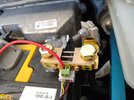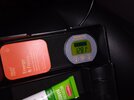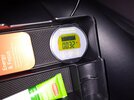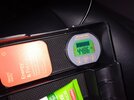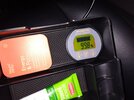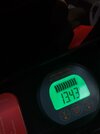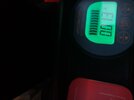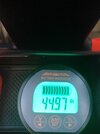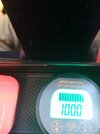I installed a battery monitor that uses a shunt to measure and calculate current, voltage, energy use in Ah, and battery SoC in %. I did this back in August. I fully charged the 12v battery while it was disconnected from the car (and with car powered down) with a smart charger until it showed 100% charged. Then I hooked up the battery monitor and programmed it so that it considers the current state as 100% SoC and a battery capacity of 45 Ah (using the number printed on the battery label).
I've observed that if the car is awake, or will be either charging or maintaining float voltage of around 13.45V (varies by temperature). It does not put a drain on the battery if the car is awake. The maximum charging current I've ever seen, even after having the car sit unused for 3 days, is less than 8 Amps. As soon as the car wakes up the charging current could be a little less than 8 Amps for a few minutes and tapers down. In 5-10 minutes it will usually be below 3 Amps. Within 1 hour of starting to charge the battery is usually full and at float voltage. When the 12v battery is at float voltage, there is less than 150mA going to it (fluctuates a little, but averages below 100mA). If the car is asleep and you don't have Sentry Mode or any other persistent feature on, the car draws about 33 mA (last measured a few weeks ago, 4 hours after finishing charging and in a 39°F garage). I remember another measurement I did last fall with the car asleep averaged around 120 mA, but it might not have been in deep sleep at that point yet or the behavior might have changed with a software update. In the half year I've been observing, the 12v battery is never drained more than about 3 Ah (out of the total possible capacity of 45 Ah) before my car recharges it again; which means that it only uses up about 6.7% of it's rated capacity (aka depth of discharge). A 6.7% DoD is perfectly fine for any old starting type lead acid battery and does not require a deep cycle battery. Keep in mind the charging and utilization behavior had changed over time with software updates because Tesla has full control of how it works and their computers can monitor all the exact things I am with my aftermarket kit. Also keep in mind that the behavior could be different from car to car, especially if Tesla uses any measurements or assumed battery age to adjust charging and utilization of the battery. For example, my 12v battery is almost 4 years old and if Tesla measures something or keeps track of something that indicates it's age, they could be going easy on it in terms of how deeply they discharge it.
Here are a few pictures of my setup and battery monitor
View attachment 764053
Readings while car is asleep
View attachment 764057
View attachment 764056
View attachment 764055
View attachment 764054
Readings when car is awake and battery fully charged
View attachment 764062
View attachment 764060
View attachment 764061
View attachment 764058



